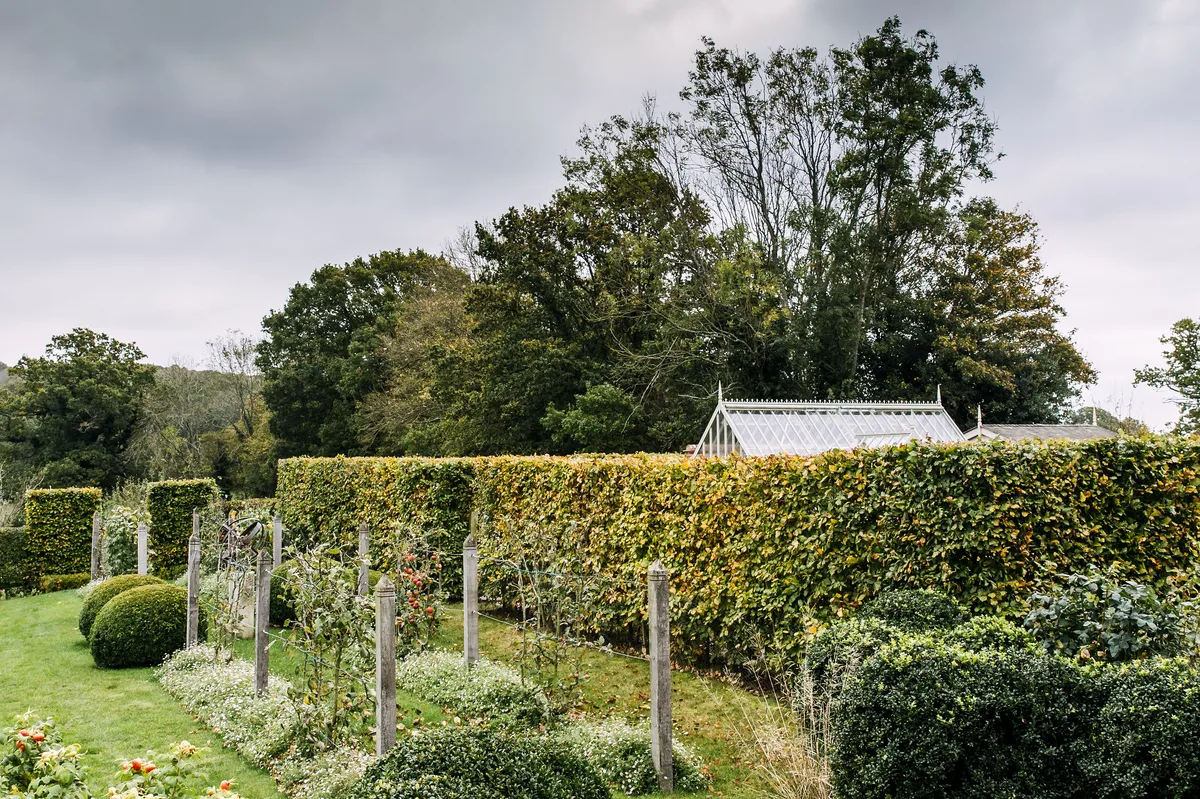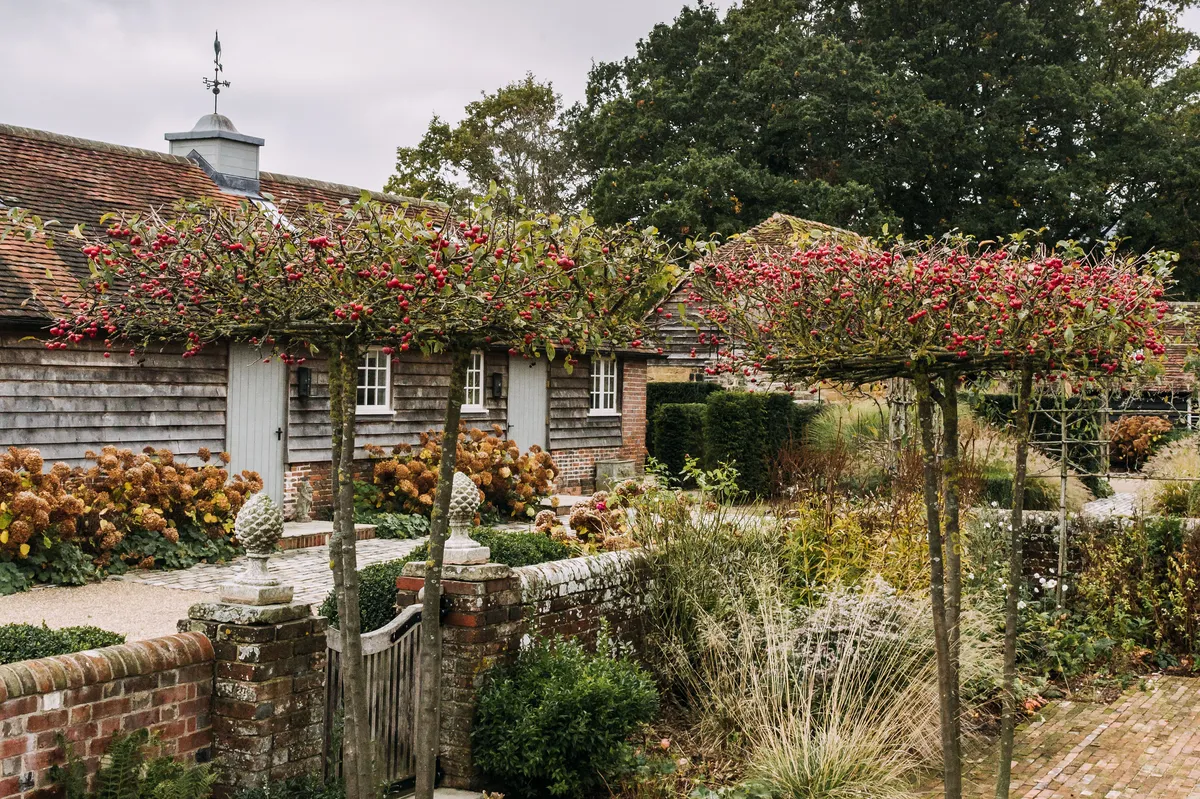Chris Moss's design is a contemporary garden in a traditional setting around a 17th-century farmhouse on the Weald in West Sussex. It is three acres of heavy clay in a temperate climate and a hardiness zone of USDA 9.
In taking on the commission to reshape the landscape of the farmhouse, Chris Moss arrived at a garden with multiple blessings. First, the scenery: whichever way you look, the view is unblemished, with fields rolling on to woodlands and barely a building in sight. The place seemed idyllic when Chris arrived on the scene – the challenge was to make it even more so, taking a bold hand with the design while remaining responsive to the intrinsic charm of the site and the heritage of its buildings. It fell to him to filter out the good from the bad. Read our full feature on Chris' garden in November's Gardens Illustrated.

Clumps of Miscanthus sinensis ‘Morning Light’ set the tone for the cool, restrained planting around the 17th-century farmhouse. Closer to the house, this gives way to more traditional, cottage garden-style planting, with pleached hornbeam hedges screening the kitchen garden beyond.
I felt that so close to a traditional farmhouse like this the planting should more closely resemble that of a traditional cottage garden

A pair of clipped, table-top,crab apple Malus ‘Evereste’ create an entrance to what was originally the front door of the farmhouse, which dates from the 17th century and is Grade II listed.

In the kitchen garden, the golden hue of the moor grass Molinia caerulea subsp. arundinacea ‘Transparent’ contrasts with the dark foliage of clipped box. The rill is one of several axial gestures, none of which are overly grand or imposing.

A Rosa rugosa ‘Alba’, heavy with hips, and loosely clipped box lead the eye to two lines of espaliered apple trees Malus domestica ‘Red Belle de Boskoop’ and M. domestica ‘Royal Gala’ underplanted with Erigeron karvinskianus, to form what is known as the apple walk.

Planting to the north of the house is restrained, creating a sense of open space that supports the magnificent view. Beech topiary pieces abut the generously proportioned terrace, which catches the early evening light.

To the east of the house a meandering line of clipped, box is both bold and subtle. Beyond this an apple walk leads into the fields beyond, to the north a low-key allée of clipped hornbeam.

The faded heads of Hydrangea arborescens ‘Annabelle’ add rich autumnal colour in front of the guest house. The brick pavers were reclaimed from the original farmyard, although they’ve been re-laid in a different orientation with their narrow face uppermost.

One of the principal elements of the challenge in laying out this new garden was to create something contemporary and attuned to the uses of its owners, without jarring against the strong character of the existing structures, all glorious relics of the rural West Sussex vernacular. One contrivance that has helped Chris achieve this is the partial division of the garden into separate spaces.
The place seemed idyllic when Chris arrived on the scene – the challenge was to make it even more so
This staple of English domestic garden design was used perhaps most famously at Sissinghurst, where the subdivision of the garden allowed Vita Sackville-West to create gardens of different characters and colour themes. The old farmyard here is a case in point. The black timber cladding of the buildings, although traditional, encouraged Chris to re-imagine the space with a modern planting palette. Abstract rectangular blocks of yew dominate the planting and enhance the shimmering lightness of grasses, such as Miscanthus sinensis ‘Morning Light’ and Pennisetum alopecuroides ‘Hameln’. Colour is restricted to green or white. It is a fine example of how a planting can create or enhance the ‘mood’ in a given area – and how radically the mood can shift in response to the context within one garden.
Find out more about Chris’s work at chrismossgardens.com